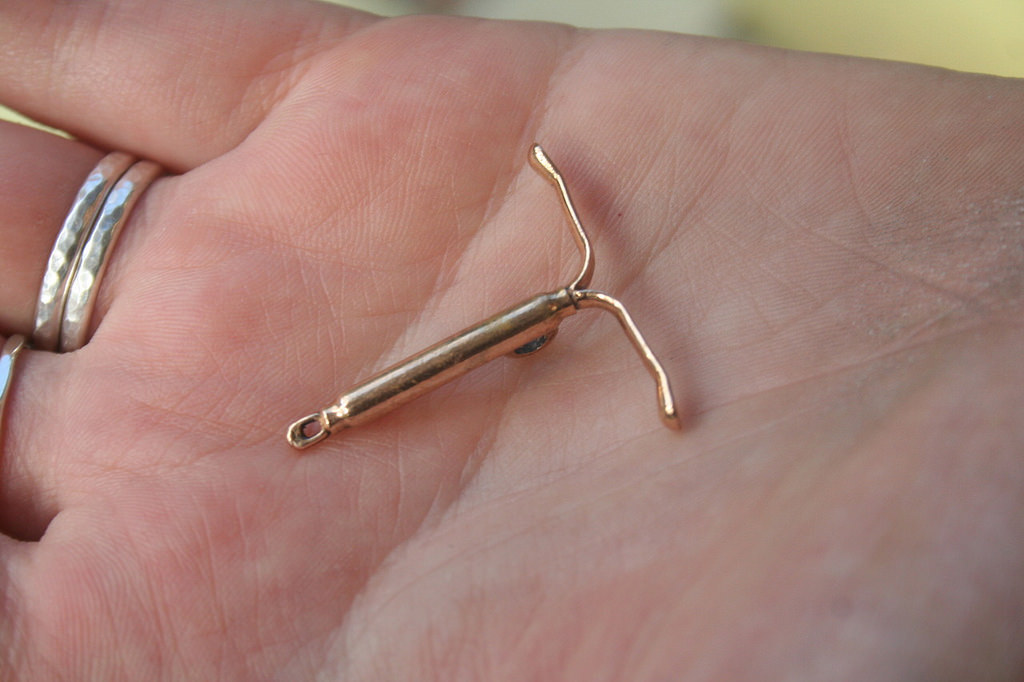IUDs, or intrauterine devices, are a form of long-lasting birth control for women. In January, IUDs made headlines after Planned Parenthood, a nonprofit organization providing reproductive healthcare, revealed that they saw a 900 percent increase in women requesting IUDs following Donald Trump’s election. The Trump administration has promised to repeal and replace the Affordable Care Act, which many women currently depend on for covered birth control. Women have expressed that getting an IUD, which can last for 3 to 12 years, is their way of ensuring their access to birth control in the future.
But what exactly is an IUD? An IUD is a small, T-shaped piece of flexible plastic inserted into the uterus to prevent pregnancy. There are two types of IUDs currently on the market: the copper IUD and the hormonal IUD.
Image Source: Abrams/Lacagnina
The copper IUD has the brand name ParaGard and is wrapped in thin copper wire. ParaGard works by releasing copper ions into the uterus. These ions cause localized inflammation: white blood cells flock to the uterus and create an environment toxic to foreign bodies, including sperm. Sperm are thus “attacked” and cannot make it to the fallopian tube to fertilize an egg.
The hormonal IUD includes the brands Liletta, Mirena, Skyla, and Kyleena. Hormonal IUDs release levonorgestrel, a progestin hormone also found in birth control pills and morning-after pills. The levonorgestrel works by thickening cervical mucus to block sperm from traveling further into the uterus. It may also inhibit ovulation (the release of an egg from an ovary) and implantation (a fertilized egg embedding itself in the uterine lining).
Image Source: Dorling Kindersley
IUDs are safe and can usually be inserted and removed with relative ease. During insertion, your doctor will carefully navigate an applicator tube through your cervical canal to place the IUD in your uterus. Following insertion, you may experience side effects such as cramping or irregular periods, but these symptoms should reduce over time as your body gets used to the IUD. The IUD can also be removed at any time; your doctor will gently pull on strings attached to the IUD so it slips out.
IUDs are becoming increasingly popular as a contraceptive. They are long-lasting and more than 99% effective at preventing pregnancy. They are also 99.9% effective as emergency contraception when inserted up to 5 days after unprotected sex. However, IUDs do not offer any protection against STDs (sexually transmitted diseases).
If you are interested in getting an IUD, make sure to consult a healthcare professional.
Feature Image Source: IUD by Sarah Mirk










